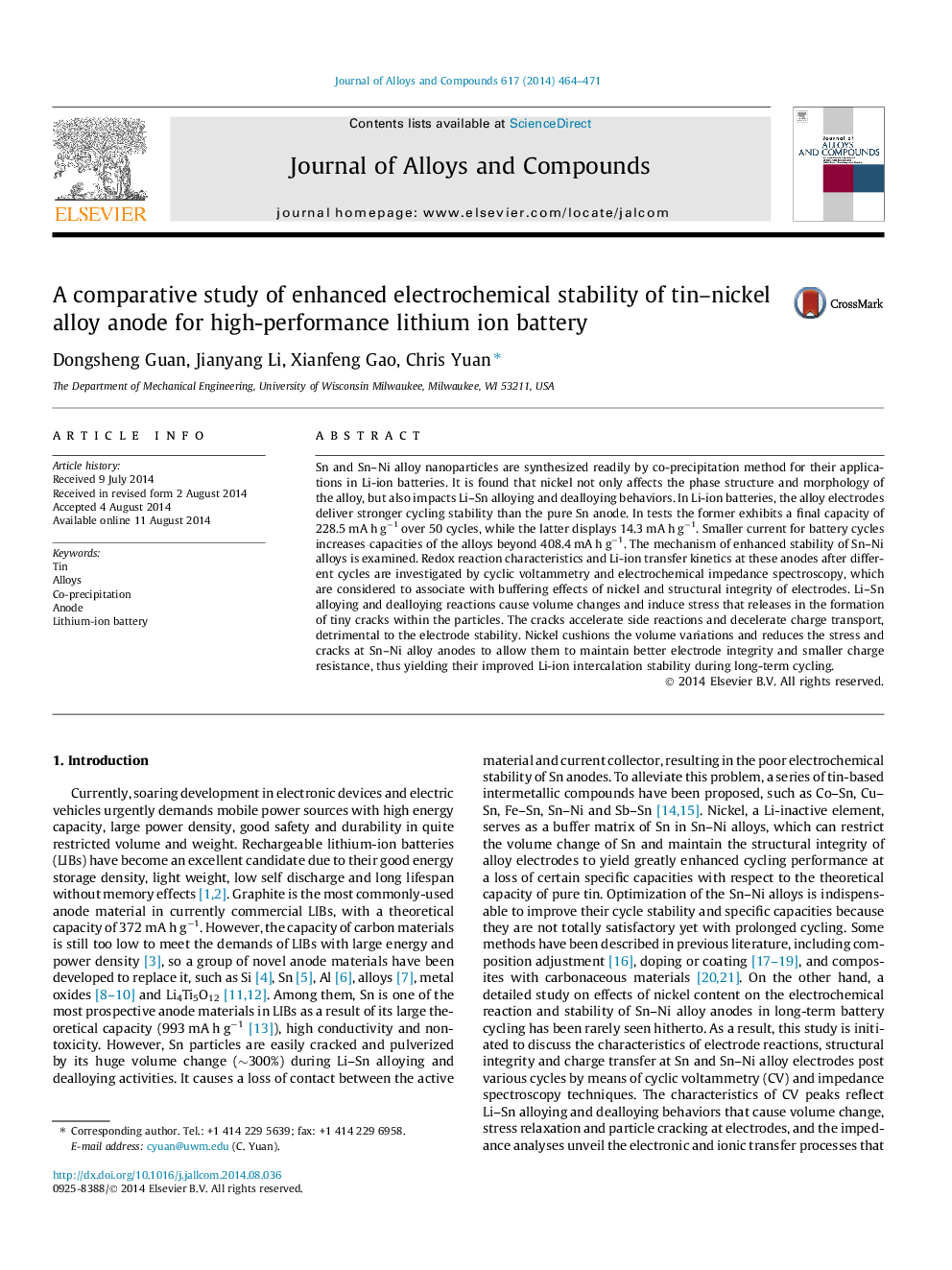| کد مقاله | کد نشریه | سال انتشار | مقاله انگلیسی | نسخه تمام متن |
|---|---|---|---|---|
| 8000942 | 1516276 | 2014 | 8 صفحه PDF | دانلود رایگان |
عنوان انگلیسی مقاله ISI
A comparative study of enhanced electrochemical stability of tin-nickel alloy anode for high-performance lithium ion battery
ترجمه فارسی عنوان
بررسی مقایسه ای افزایش ثبات الکتروشیمیایی آنودایز آلیاژی قلع-نیکل برای باتری لیتیوم یون با کارایی بالا
دانلود مقاله + سفارش ترجمه
دانلود مقاله ISI انگلیسی
رایگان برای ایرانیان
کلمات کلیدی
قلع، آلیاژها، هم رسوبی، آنود، باتری لیتیوم یون،
موضوعات مرتبط
مهندسی و علوم پایه
مهندسی مواد
فلزات و آلیاژها
چکیده انگلیسی
Sn and Sn-Ni alloy nanoparticles are synthesized readily by co-precipitation method for their applications in Li-ion batteries. It is found that nickel not only affects the phase structure and morphology of the alloy, but also impacts Li-Sn alloying and dealloying behaviors. In Li-ion batteries, the alloy electrodes deliver stronger cycling stability than the pure Sn anode. In tests the former exhibits a final capacity of 228.5 mA h gâ1 over 50 cycles, while the latter displays 14.3 mA h gâ1. Smaller current for battery cycles increases capacities of the alloys beyond 408.4 mA h gâ1. The mechanism of enhanced stability of Sn-Ni alloys is examined. Redox reaction characteristics and Li-ion transfer kinetics at these anodes after different cycles are investigated by cyclic voltammetry and electrochemical impedance spectroscopy, which are considered to associate with buffering effects of nickel and structural integrity of electrodes. Li-Sn alloying and dealloying reactions cause volume changes and induce stress that releases in the formation of tiny cracks within the particles. The cracks accelerate side reactions and decelerate charge transport, detrimental to the electrode stability. Nickel cushions the volume variations and reduces the stress and cracks at Sn-Ni alloy anodes to allow them to maintain better electrode integrity and smaller charge resistance, thus yielding their improved Li-ion intercalation stability during long-term cycling.
ناشر
Database: Elsevier - ScienceDirect (ساینس دایرکت)
Journal: Journal of Alloys and Compounds - Volume 617, 25 December 2014, Pages 464-471
Journal: Journal of Alloys and Compounds - Volume 617, 25 December 2014, Pages 464-471
نویسندگان
Dongsheng Guan, Jianyang Li, Xianfeng Gao, Chris Yuan,
